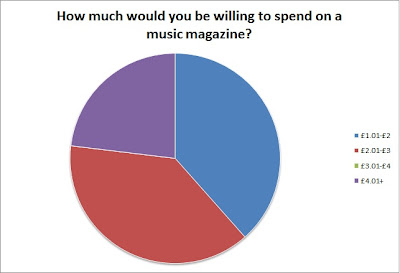I have changed my magazine's genre from being Chart music to Hip-Hop as I have more knowledge on Hip-Hop and feel I would produce a better product and have more fun if it is themed on Hip-Hop.
When creating my Hip Hop magazine, i will need examples of some current established Hip Hop magazine's that will help me to create mine.
XXL
The first magazine that i will speak about that will help me when creating my magazine is XXL Magazine. XXL is one of the biggest and most popular Hip Hop magazines that caters to everything involving Hip Hop including artists, groups, concerts and videos. The magazine originates from America and the first issue was published in 1997. Every issue has the same house style on its front cover with the XXL logo located in the top left corner. The logo's three capital letters are in white with a red background in order to make it clearly stand out, even if something is covering it. The front cover usually includes one main image of a Hip Hop artist in the center of the page being surrounded by texts explaining what else is included inside of the issue. The magazine features a double paged contents page with the same layout. On the first page at the top is the tag line which says 'The A-Side' and on the second page at the top it says 'The B-Side'. The contents pages follow the same colour scheme of the magazine which is red, white and black as well as various images and contents of what is inside.
Spin
The next magazine that will help me when creating mine is Spin magazine. The Spin magazine has two main genres to it. College-orientated rock music and Hip Hop. It is an American magazine and its first issue was published in 1985. In the past, it has featured artists such as Eminem, Oasis and Odd Future. Very much like XXL Magazine, the Spin logo is almost the exact same. The name of the magazine in capital white text, with a red background/box. These colours are very effective together, hence why they are used by multiple magazines. Like in the majority of magazines, the Spin logo is located in the top left corner of the front cover. The cover includes one main image of an artist in the center surrounded by cover lines that attract peoples attention.
Vibe
Vibe is another music magazine that i will use as an example when creating my Hip Hop themed magazine. Vibe is another American magazine and focuses on the genres of R&B and Hip Hop. Its main competitors are The Source and XXL. Vibe magazine doesn't necessarily have a colour scheme to it, as some of the front covers include colours such as red, blue, orange, yellow, white and black. The logo is located at the top of the magazine and covers it from left to right. Over the years, it has included artists such as Kanye West, Chris Brown and Rihanna.
The Source
The source is another Hip Hop magazine, however rather than just covering music, it also covers politics and culture mainly of America which is where the magazine is from. The first issue of Source was published in 1988, and the magazine has included the likes of Barack Obama, The Game and Kendrick Lamar. It doesn't have a specific colour scheme to it as the front covers alter from colours such as red, white and black. Again, the logo is located at the top of the magazine, and on the majority of issues is the biggest piece of text on the page.
Billboard
Billboard magazine can also help me when creating my magazine as it covers Chart music which can include all kinds of genres of music such as R&B, Pop, Rock and most importantly to me... Hip Hop. The Billboard logo is very creative and features the colours white/black, red, yellow, green and blue. Like most magazines, the logo is located at the top and can be covered by things such as the image of an artist or other text in things such as puffs/pugs. Even with the logo being covered, we would still be able to tell that the magazine is Billboard because it is an established magazine worldwide.
Overall, these five magazines will help me when creating my Hip Hop magazine as they all include my chosen genre. I will be using them as examples in order to help me when designing things such as layouts and house styles to be used in my magazine. Hopefully, i will be able to purchase one of these magazines so that i can annotate it and get a more clear view on how to construct my magazine.


























